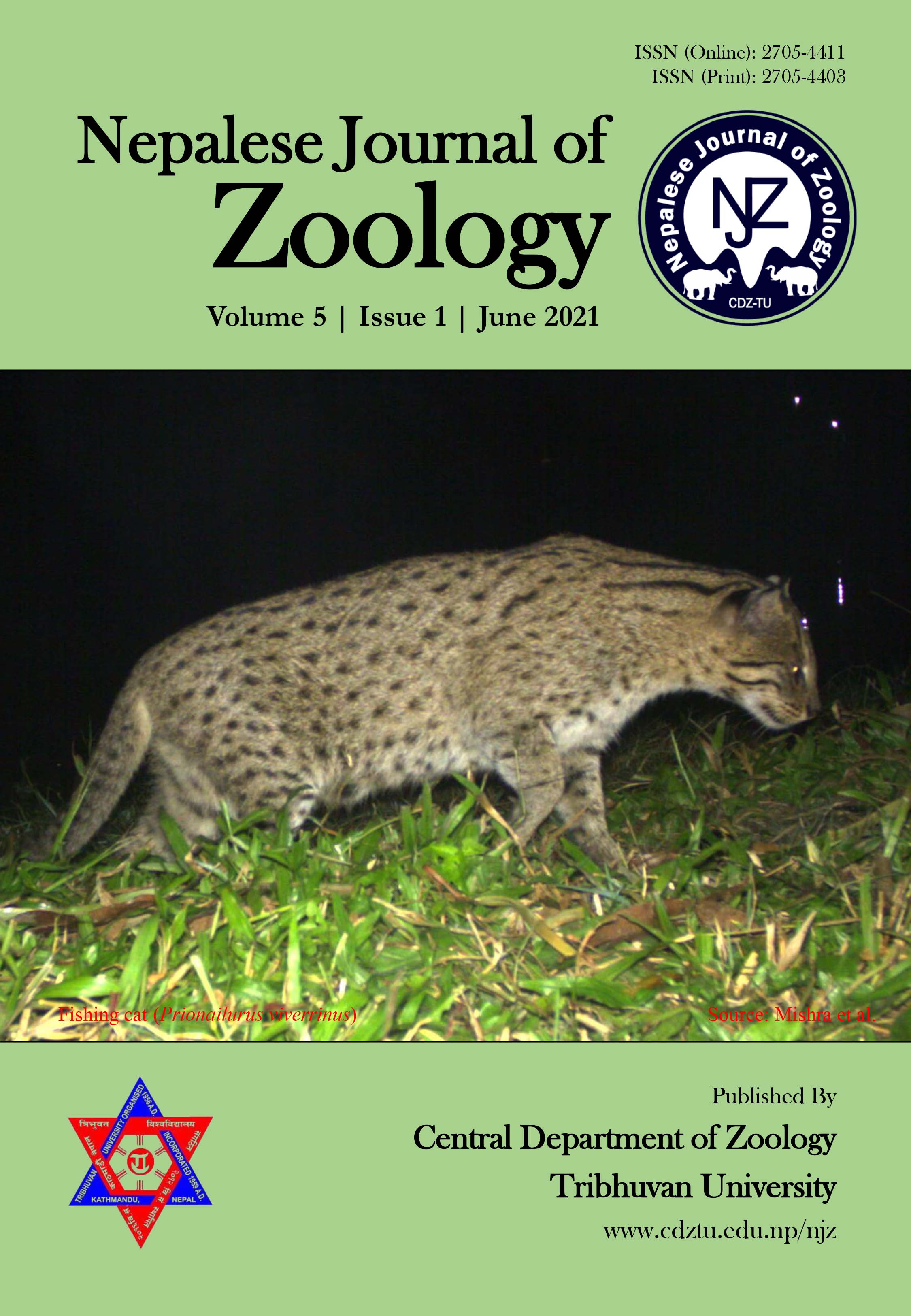Spatiotemporal association of human-elephant conflict around Parsa National Park, Nepal
DOI:
https://doi.org/10.3126/njz.v5i1.38283Keywords:
Crop-raiding, Forest distance, Lowland Terai, Mitigation, Unpalatable cropsAbstract
This study was carried to evaluate the Spatio-temporal association of human-elephant conflict (HEC) among five different rural municipalities (Nirmalbasti, Jirabhawani, Sakhuwaparsauni, Parsagadhi, and Paterwasugauli) of Parsa District around Parsa National Park in 2019. Primary data was collected by using questionnaire surveys with victims’ family and local people using random sampling method, key informant interviews with Chief Conservation Officer of Parsa National Park, District Forest Officer, ZSL field official, Chairperson of Batika Buffer Zone User Committee, focus group discussion, and field visit to verify the information. Total six people were killed and one person was survived with severe injury by the elephant attacks between 2013 and 2019 in the study area. Crop raiding was perceived as the most serious conflict from the elephants by local people. People around the national park are mostly farmers with a low level of income. They are mostly dependent on agriculture for their livelihood. Elephants are damaging the crops of the farmers making their livelihood difficult. HEC intensity was highest during the rice harvest season (65%), and at night (83%). Local farmers also reported that the aroma of ripening paddy had an interesting relation with HEC, it was associated with elephants’ crop-raiding behavior. Local farmers did not use any specific traditional mitigation measure but believed that planting unpalatable crops and constructing a solar fence around the national park minimizes HEC and will promote co-existence between people and elephants.
Downloads
Downloads
Published
How to Cite
Issue
Section
License
This license enables reusers to distribute, remix, adapt, and build upon the material in any medium or format for noncommercial purposes only, and only so long as attribution is given to the creator.

